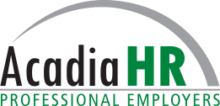If you’ve been on either side of the desk during a performance review, you know just how dreadful the process can be. For both the supervisor and the employee, the anticipation and administrative preparation required for appraisal day can be exhausting especially when the regular day-to-day job demands don’t lighten up. Indeed, performance review season can be very stressful for everyone involved, so why go through it?
It is well documented that systematic job feedback through the review process is necessary for individual professional growth and increased productivity in organizations. A supervisor’s meaningful and transparent feedback is key to employee engagement, productivity, and focus on professional growth. Engaged employees are more likely to come to work on time, perform better, and stay longer than those who are not engaged.
For a performance review process to be effective, there are three key tasks that each supervisor must accomplish.
- Identify what was accomplished well during the assessment period.
Keep tabs on employees’ accomplishments. Staying in tune with their daily activities means interacting with them on a regular basis. It means asking questions and responding to their answers. It means knowing them well enough at work to know if things at home are good or not. The best time for the supervisor to acknowledge a job well done is immediately or soon thereafter, and the worst time to do so (for the 1st time) is during the annual review. Take time to demonstrate that you care about your employees, engage in their work life, and acknowledge good things when you see them.
- Provide constructive criticism on what could have been accomplished better during the assessment period.
For most of us, saying nice things or handing out complements is easy; being critical is tough. Most people are uncomfortable delivering bad news, and a supervisor struggling to talk about performance deficiencies is a great example of this. The best way to deal with potential discomfort is to prepare ahead of time. Have a list of goals or objectives that the employee’s performance was evaluated against, and the results that were achieved for the reporting period. Be objective and fair to the employee while being fair to other employees who might have had to pick up the slack. Discuss substandard performance in terms of your expectations not being met versus their failures to perform well. If there might have been extenuating circumstances, such as an extended illness, equipment failure, or an unforeseen situation at home, take those into account.
- Establish goals for the next review period and include achievable, periodic milestones to accomplish.
Even the most eloquent constructive feedback during a performance review can fail in its purpose to improve an employee’s performance if left unchecked. Too often, this is where the wheels fall off the cart. Calling out performance discrepancies takes courage, and following through on corrective actions takes solid planning, discipline, and results orientation.
A supervisor’s goal is to develop his or her team members to perform to the best of their abilities and to continuously improve, and appraisals directly contribute to employee engagement. As time consuming as the review process is, the results far outweigh the effort. Perhaps that’s why business leaders and supervisors keen on building high performing teams attribute successful employee engagement to their love of the performance review!
Acadia HR has been helping businesses locally and nationally since 1989 by delivering tools and resources to build efficiencies in their clients through personal, customized service. For more information on outsourcing options, please call 845.876.1987 or email sa***@******HR.com.

